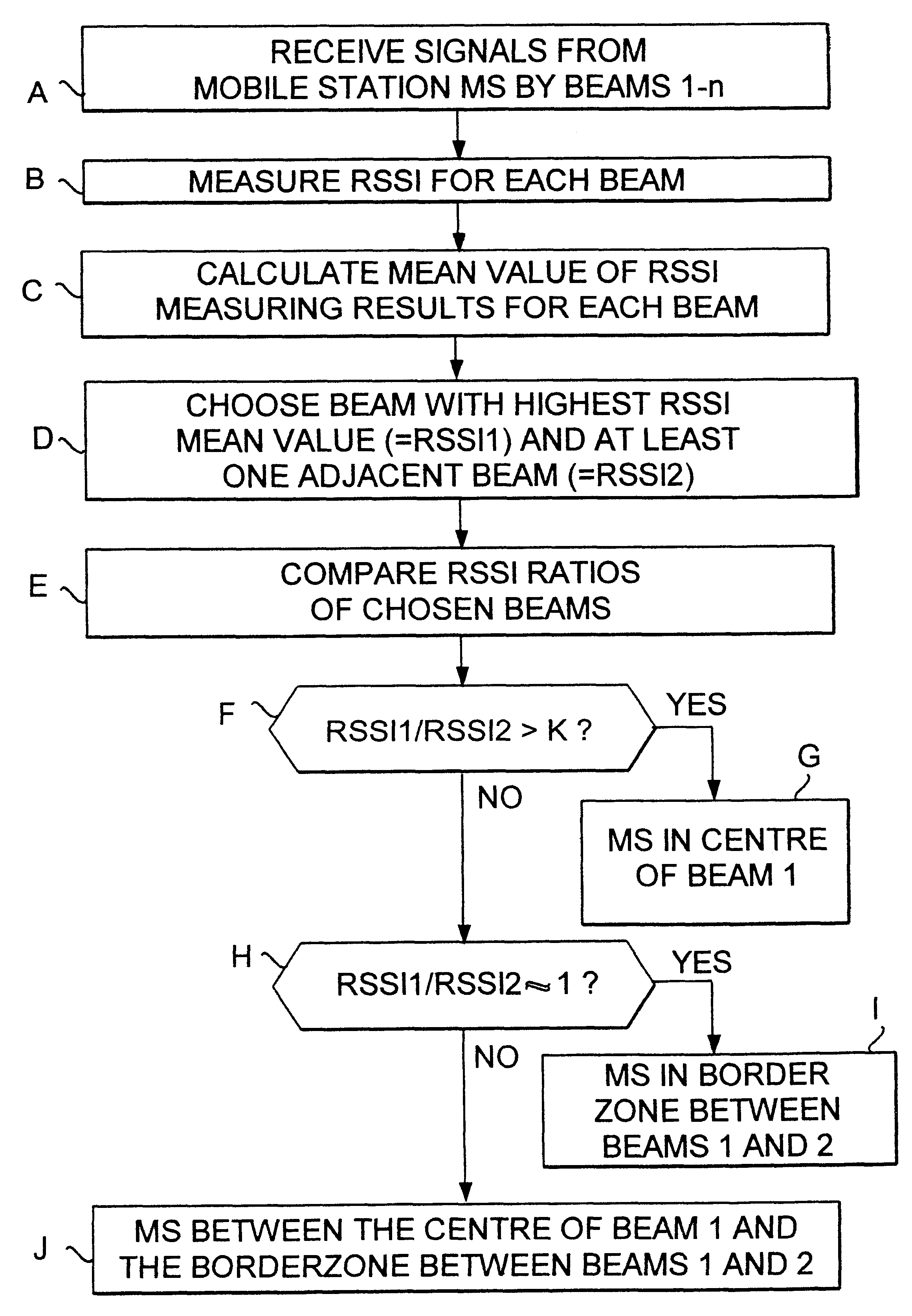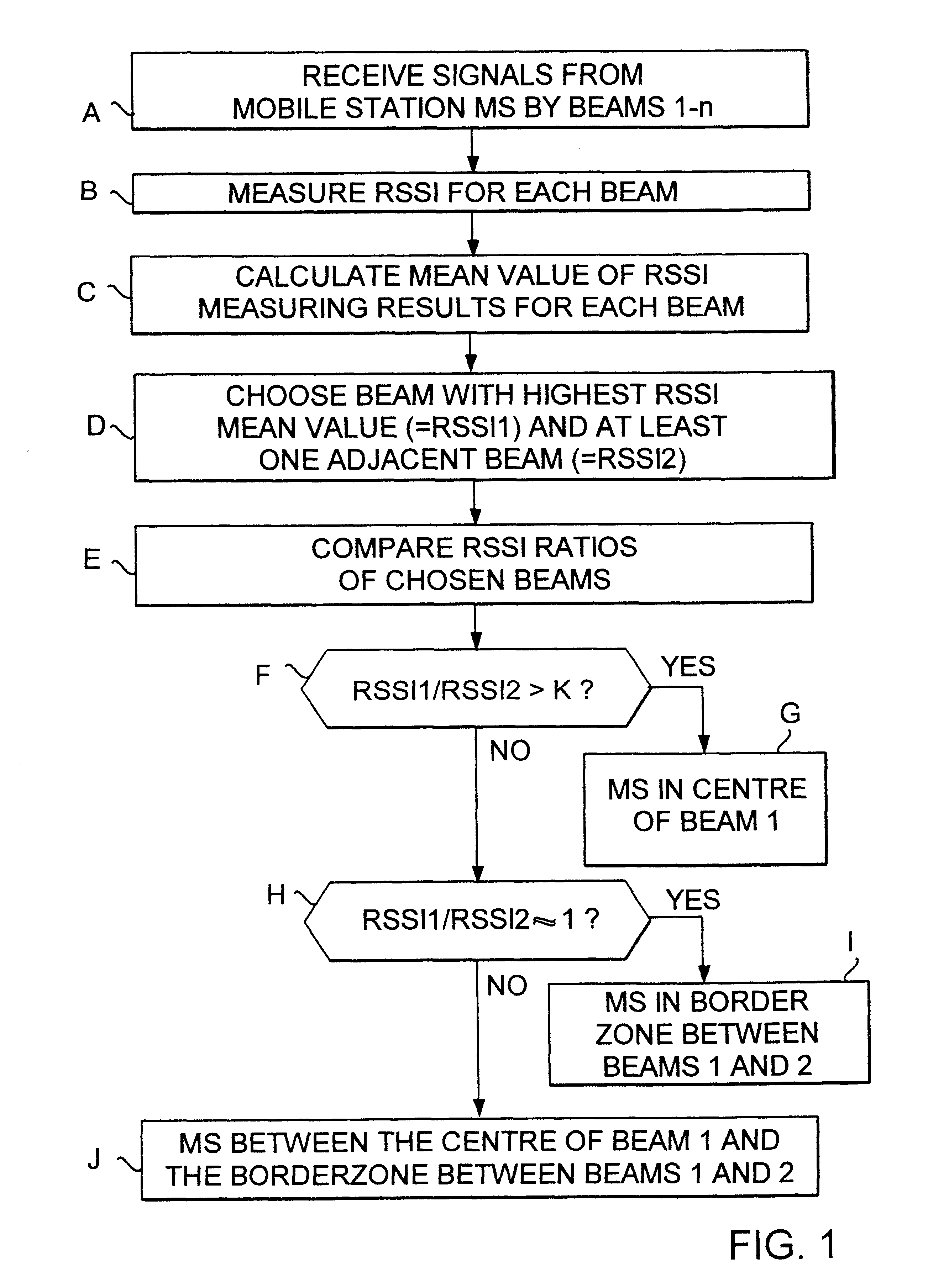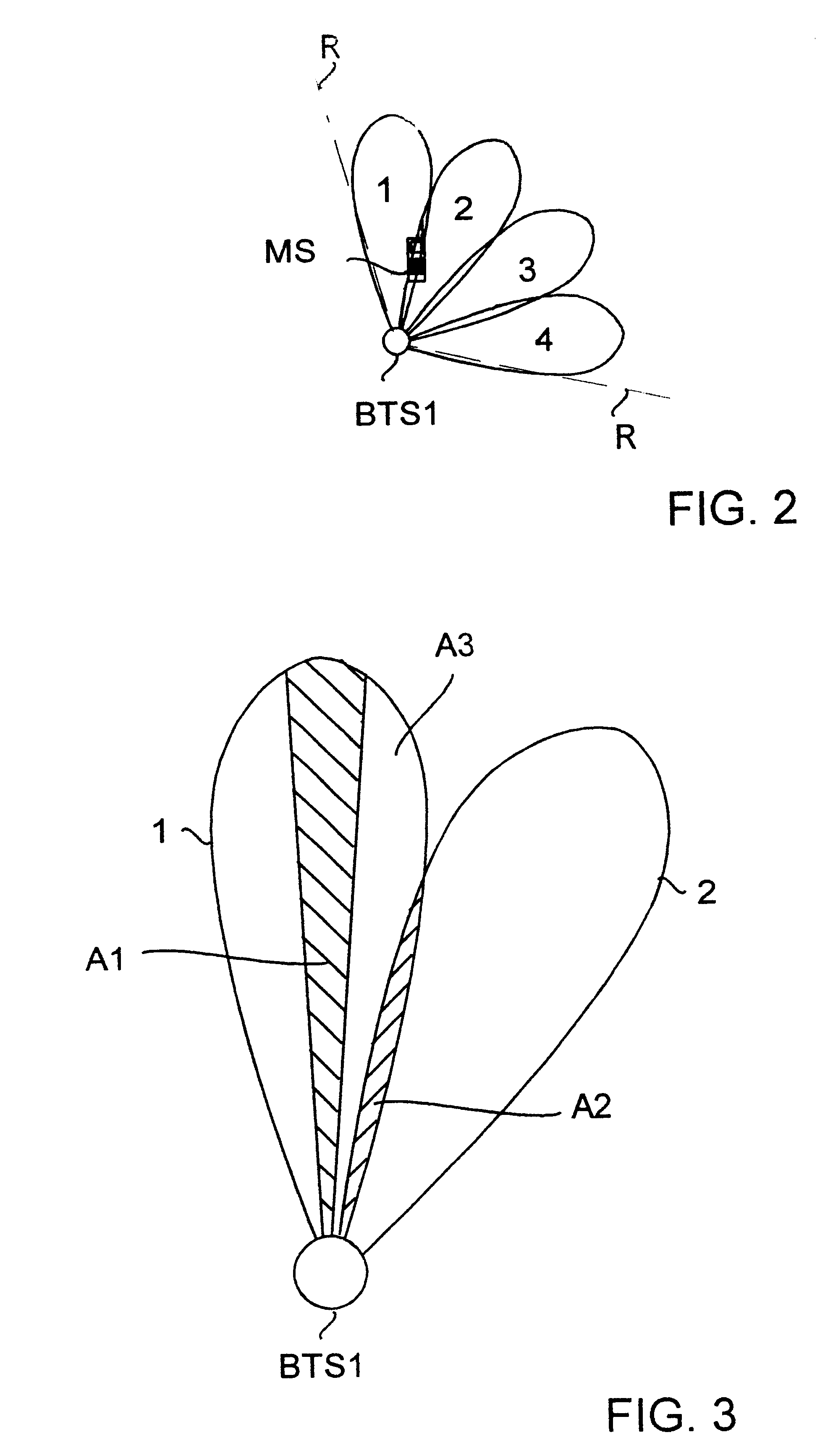Method for determining the position of a mobile station
a mobile station and position technology, applied in direction finders using radio waves, instruments, wireless communication, etc., can solve the problems of inability to determine the position of a mobile station stolen, inaccuracy, and unnecessary handover operations, so as to achieve greater accuracy, avoid unnecessary handover operations, and improve accuracy
- Summary
- Abstract
- Description
- Claims
- Application Information
AI Technical Summary
Benefits of technology
Problems solved by technology
Method used
Image
Examples
Embodiment Construction
FIG. 1 shows a block diagram of a first preferred embodiment of the method of the invention. The block diagram in FIG. 1 can, for example, be applied in a base station of the GSM system to determine the position of a mobile station.
In block A signals are received from a mobile station MS by several antenna beams directed in different directions. The antenna beams used are preferably relatively narrow beams that are directed so that they at least partly overlap (compare with FIG. 2).
In block B the received signal strength indication RSSI of the received signal is measured for the signals received by the respective beams.
In block C a mean value is calculated for the RSSI values measured within a certain time span for each beam. By calculating the mean value for the RSSI values it can be avoided that temporary disturbances influence the locating of the mobile station. For example in the GSM system the time span in question can be chosen so that the mean value is calculated for a few bu...
PUM
 Login to View More
Login to View More Abstract
Description
Claims
Application Information
 Login to View More
Login to View More - R&D
- Intellectual Property
- Life Sciences
- Materials
- Tech Scout
- Unparalleled Data Quality
- Higher Quality Content
- 60% Fewer Hallucinations
Browse by: Latest US Patents, China's latest patents, Technical Efficacy Thesaurus, Application Domain, Technology Topic, Popular Technical Reports.
© 2025 PatSnap. All rights reserved.Legal|Privacy policy|Modern Slavery Act Transparency Statement|Sitemap|About US| Contact US: help@patsnap.com



